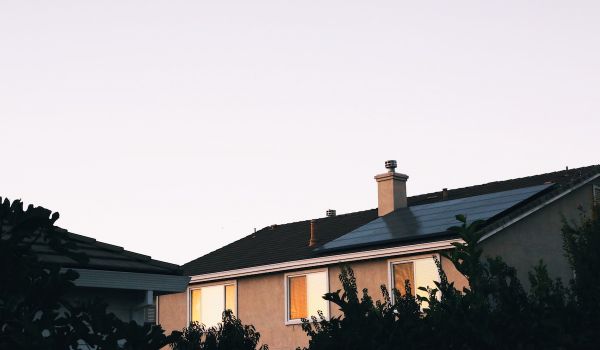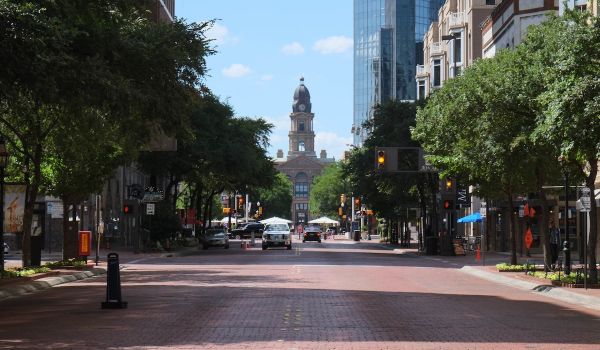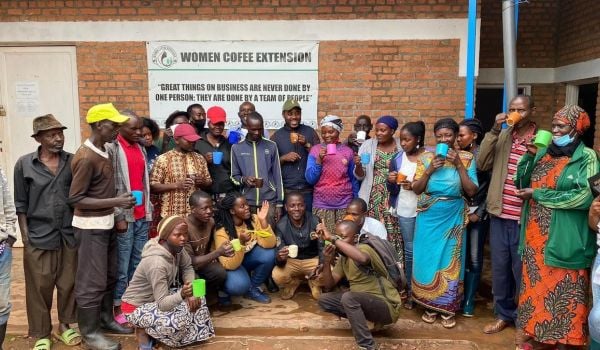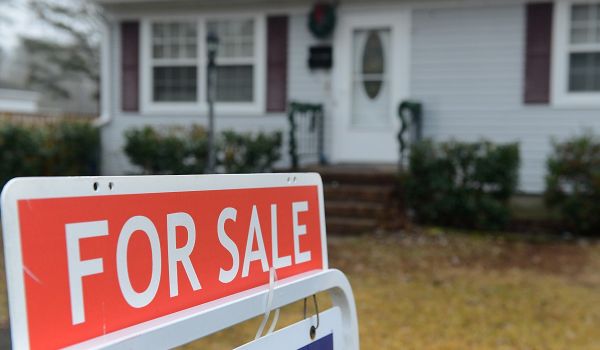Charles Dickson started sculpting at five years old and sold his first piece at 12 years old. The Los Angeles native, who’s an Artist in Residence at the Watts Tower Arts Center, sculpts in many mediums and has featured work in public art for 36 years. Yet, the 74-year-old considers his sculpture for Destination Crenshaw to be his most substantial.
“It’s one thing to do a piece that is on a corner or in a building,” he says. “It’s another thing to do a series of art pieces that take up a community walk. Now you’re influencing the entire community and visitors and people going through it. There’s a lot of empowering going on there.”
Dickson’s work will be displayed in Sankofa Park, an open-air museum that’s a part of Destination Crenshaw, a cultural infrastructure development in Los Angeles. The project, which will run for 1.3 miles along Crenshaw Boulevard from 48th to 60th streets, hopes to establish the neighborhood as the go-to place for Black art and culture, similarly to how tourists visit Chinatown or Little Italy.
Last month, Destination Crenshaw secured $30 million in New Markets Tax Credits (NMTC). Jason Foster, president and COO of Destination Crenshaw, said it was important to introduce businesses in South Los Angeles, where Destination Crenshaw is located to NMTC.
“Ultimately, it’s just another investment tool and just another funding pipeline for us to then be able to socialize to the broader South LA community of the possibilities,” Foster says. “…to be able to then create that kind of next evolution of what investment could look like for our organizations.”
The financial partners for the NMTC were a mix of traditional banks, CDFIs and CDEs, including LISC and Building America. Destination Crenshaw has so far slated $4,369,904 for the construction of Sankofa Park and $1,605,899 as working capital for the organization’s operations and programming.
The organization is in the second phase of its capital campaign. In the first phase, they raised $66 million through a capital campaign. About $50 million went to construction, and the remaining served to fund projects such as public art, wayfinding signage, an exhibition, AR and general operating funds.
“Through 2027, we extrapolated that it’ll be a little over $100 million for the entire campaign,” Foster says. “That includes an endowment and operational funds for the organization through 2027, as well as execution of a small business services program and our DC art corp., which is our kind of public art workforce development to actually create these murals.”
As Next City has reported, Destination Crenshaw was actualized in 2017 after the development of a new Metro line train from Los Angeles International Airport to the rest of the city. The train line is being built at ground level, which is less costly than building underground but will cut straight through Crenshaw Boulevard, eliminating 300 business parking spaces and 400 trees along the boulevard.
Community members — led by community organizer and City Councilman Marqueece Harris-Dawson along with curators, historians, politicians, academicians, business owners and local artists — were loud in their opposition, but the train line was a fait accompli.
However, this unwanted expansion provided an opportunity for community members to form a unique Black arts and cultural corridor. The build-out also encouraged the organizers and residents to ask questions on the sustainability and the evolution of the Black community in South Los Angeles. Who are we going to be? How do we create a sense of hope?
Those questions laid the groundwork for the 1.3-mile cultural corridor, which aims to produce a sense of permanence and reflect the beauty and depth of the Black American experience.
Two of Destination Crenshaw’s concerns are job creation and retention, and arts and cultural infrastructure. Jobs address permanence, as people who work in the community where they live are more likely to stay. The project hopes to sustain over 40 local small businesses and nonprofits, as well as create over 40 permanent jobs and over 600 construction jobs, with more than 70% of those given to locals.
In the construction of Sankofa Park, some workers have been given an opportunity to gain work experience for eventual union membership by participating in a year-long pre-apprentice program. Foster says they hope to get the private banking industry and the unions to work together to create more careers and a stable economy for the Black community in South L.A.
“The goal for our project is to create union careers,” Foster says. “We’re trying to pipeline the pre-apprentice and apprentice program that trade unions have in Los Angeles.”
Destination Crenshaw will also reforest the corridor with more than 800 trees, commission over 100 murals and sculptures, build 10 pocket parks and community spaces, and offer 43 businesses throughout the corridor. They also plan to involve artists throughout in wayfinding signage, banners and digital opportunities.
“I say the chief export of LA is Black creative capital. And it comes from South LA,” Foster says. “It comes from our community. So how do we capture that?”
One of those 10 parks is Sankofa Park, a planned 40,000-square-foot amphitheater along the corridor featuring four permanent sculptors by artists Dickson, Maren Hassinger, Kehinde Wiley and Artis Lane.
For close to 40 years, Dickson, has been using aspects of Senufo images, which he describes as “highly spiritual images in African culture.” His sculpture in Sankofa Park incorporates both the Senufo image and cruising lowrider cars that Crenshaw Boulevard is known for. The lowriders represent an aspect of the Black creative economy that is often not represented.
“Car culture is very much about the happy and finding that personal expression through an automotive customizing,” Dickson says. “Because your creative self wants to show off what you’ve worked on for years, or what you put your money into. The cars have become the child and it’s a big deal.”
_768_1024_80.jpg)
Artist Charles Dickson with his sculpture (Photo courtesy of Charles Dickson)
_768_1024_80.jpg)
Charles Dickson's sculpture (Photo courtesy of Charles Dickson)
Dickson designed three 10-feet-tall Senufo figures out of stainless. The tripod figures will have eight-foot-tall trestles, with vehicles on them, and an engine making the height considerably taller. This is the first time he has sculpted out of stainless steel and he worked with engineers to get the rendering correct.
“When I walk into the foundry and I see these figures, when I look at the scale of what this thing is, the impact that it can make, I’m very excited about it,” Dickson says. “The scale of it is very empowering for me.”
Foster has partnered with colleges and other nonprofits to study how to celebrate and monetize Black creatives. Some advisors to Destination Crenshaw are from UCLA, and Foster is working with the university on a study on the impact of aesthetics in the black community. Destination Crenshaw is also working with the Otis College of Art and Design, who release the annual Report on the Creative Economy, on a Crenshaw-specific report highlighting the creative economy and its impacts on the local community.
“Our work in the creative economy is more than just accelerating businesses,” Foster says. “It’s more than just connecting [artists and organizations] to lending or grants or things like that. It’s doing research. We want to figure out ways in which policy can support our creatives, but also capture the full value of what they create.”
Destination Crenshaw is also part of the High Line Network, a group of urban projects in more than 35 cities that are turning old infrastructure into new public spaces. Foster says Destination Crenshaw wants to learn from other groups as to how to stave off the negative effects and the costs of building a public space, but also target NMTC.
“The point of new markets is obviously the net benefits,” he says. “It creates opportunities and more funding for our construction and our working capital to be able to scale up our business and our organization and add staff and time and programming and all these things. But ultimately it is to create a better relationship with NMTC mechanism for the South LA businesses, for the South LA nonprofits.”
Artists like Dickson say the potential impact of Destination Crenshaw could be far-reaching.
“It’s a breakthrough in community,” Dickson says. “Destination Crenshaw is leaving an element to say you are worthy and important and continue to be your creative self. In fact, it covers all cultures. But the Black culture in that community needs to be reminded that they were there and they left a creative mark.”

This story is part of our series, CDFI Futures, which explores the community development finance industry through the lenses of equity, public policy and inclusive community development. The series is generously supported by Partners for the Common Good. Sign up for PCG’s CapNexus newsletter at capnexus.org.
Connie Aitcheson is a freelance writer based between Florida and Kingston, Jamaica. She worked for many years at Sports Illustrated and has been published in Essence, PTSD Journal, Cosmopolitan and espnw.com.

_920_518_920_518_80.jpg)







_600_350_80_s_c1.jpg)






